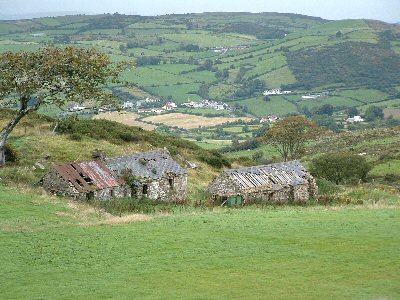Small farms continue to predominate in the Ring of Gullion, though fewer than before of those who occupy them any longer practise agriculture as their first occupation. Still their use, or former use, has shaped the landscape.
The average holding now is 15 hectares and only sixteen farms in the entire area are larger than 50 hectares. Some 6.4% of the entire area is under forest. These human planted areas with their discordant straight edges are a distraction rather than an aesthetic enhancement. It’s a far cry from the natural habitat of woodland that predominated before the arrival of the English.
Native woodland – what then remained of it – was largely cleared in the eighteenth century, allegedly to make these outer regions more accessible to the English forces but perhaps mainly to help fuel the first industrial revolution in
Still, though grateful for what little of the old that survives, I cannot peacefully enjoy these parkland estates for my heart is wrenched pondering on those forebears of mine who went landless, hungry and destitute while the former ‘soldiers of fortune’ in the big houses enjoyed their wide, unproductive parklands.
